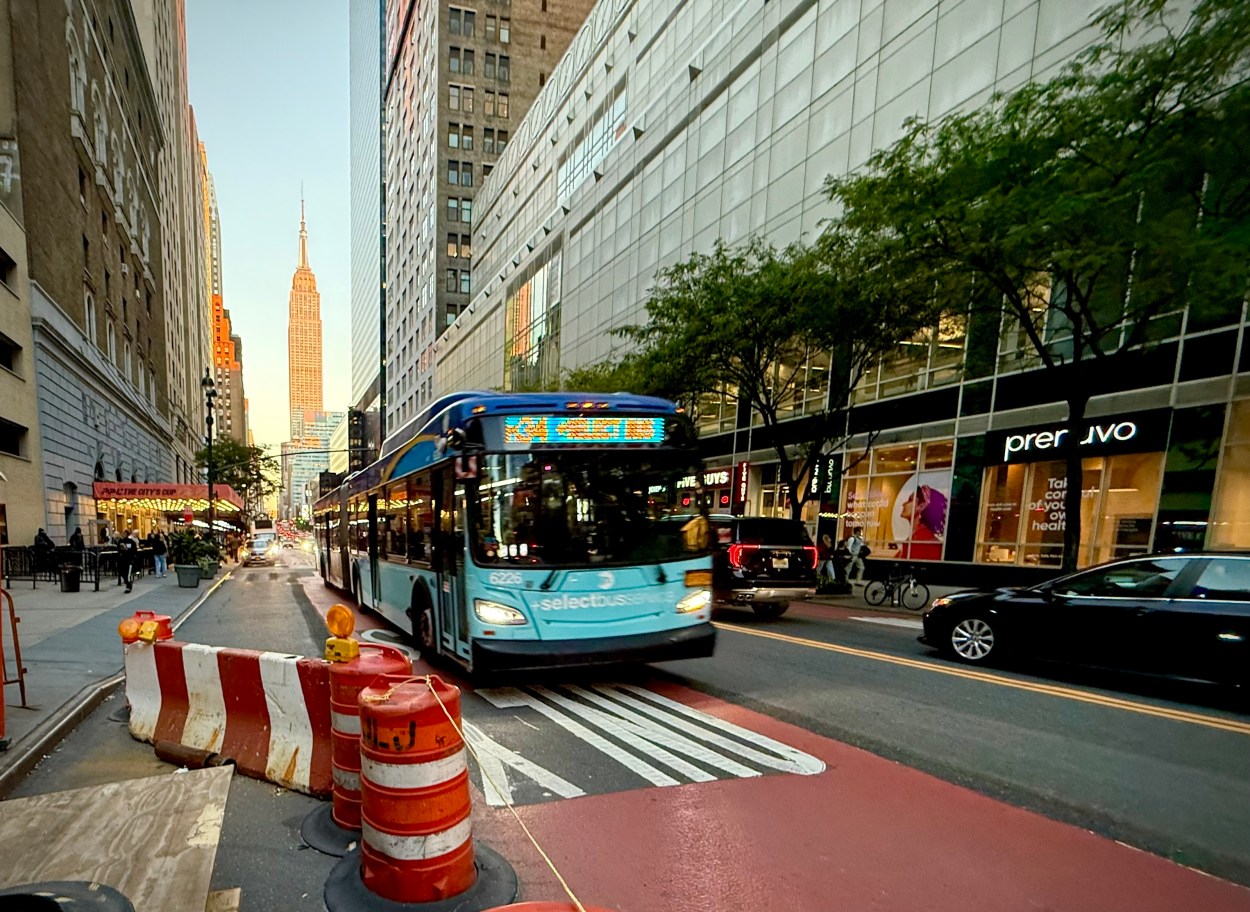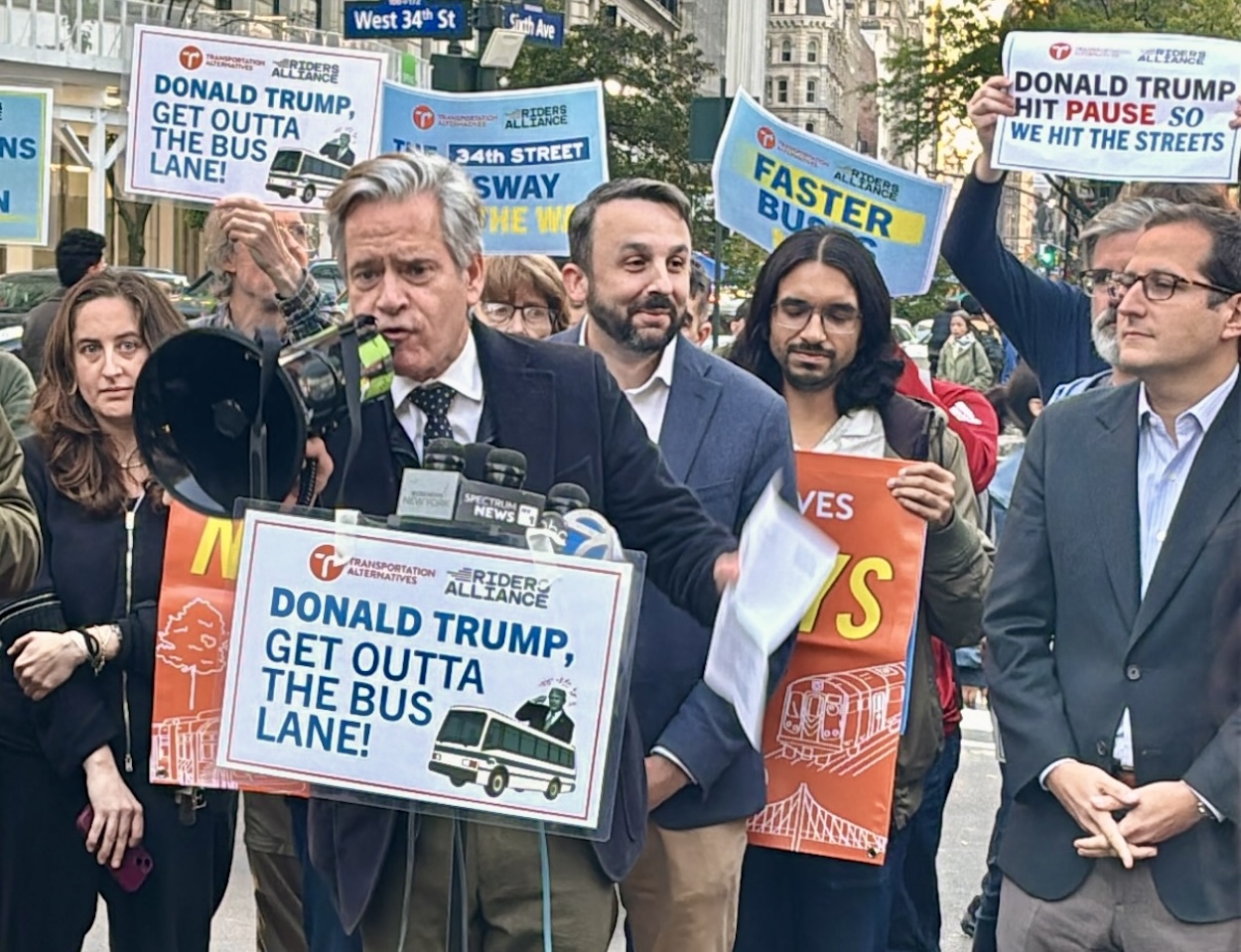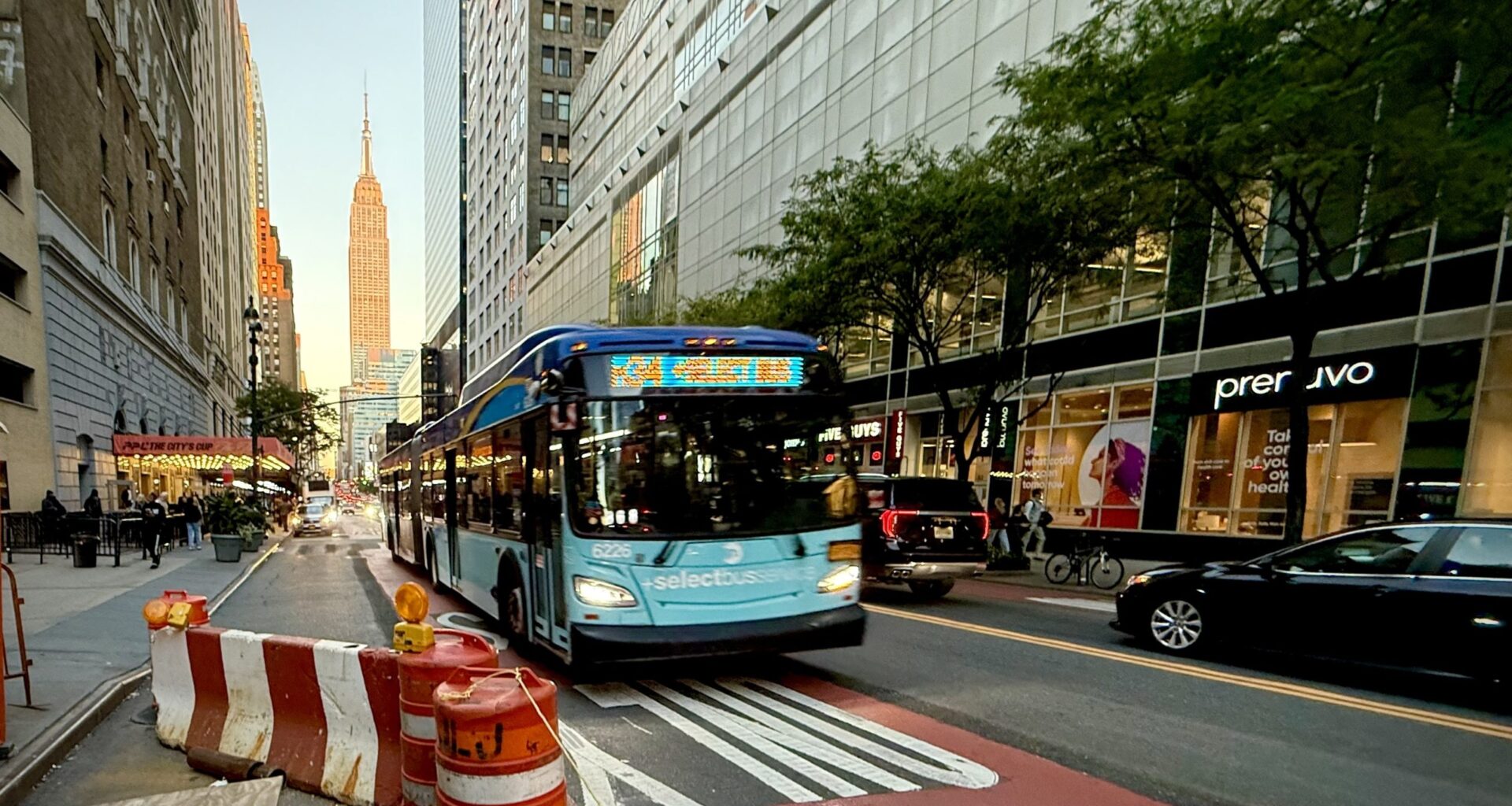Work on the long-awaited 34th Street busway ground to a halt on Friday, after President Trump’s administration ordered New York City to pause construction or risk losing vital federal funding for other transit projects. The federal intervention has triggered an outpouring of frustration from local leaders, transit advocates and everyday riders who had championed the plan as a lynchpin for a fairer, more sustainable Midtown.
 the M34 bus passes by a work site on W34th Street on Friday evening. Photo: Phil O’Brien
the M34 bus passes by a work site on W34th Street on Friday evening. Photo: Phil O’Brien
Councilmember Erik Bottcher, who helped usher the busway through City Council as part of the landmark Midtown South Mixed-Use (MSMX) rezoning, called the Trump administration’s move “a slap in the face to every New Yorker who depends on public transit.” For Bottcher, the busway was a symbol of New York’s commitment to affordability, sustainability, and public safety. “It wasn’t just about buses. It was about building a more efficient, sustainable city where working people can get to their jobs faster and our streets are safer and cleaner. To see it derailed by political interference from Washington is unacceptable,” he said.
State Senator Brad Hoylman-Sigal took an even sharper tone during Friday evening’s hastily organized “Emergency Rally for Faster Buses” at W34th and Broadway. “It’s crap. We sure as hell are getting our bus way,” Hoylman-Sigal declared to the crowd gathered by Transportation Alternatives and the Riders Alliance. “Who could believe that the federal government would spend so much time and energy on a local street? Let’s be clear, we understand that Donald Trump says it’s his way or the highway, but news flash, Donald Trump, this is not a highway. This is 34th Street.”
Assemblymember Tony Simone also slammed the Trump administration’s move, highlighting its hypocrisy. “The leader of the so-called party of states’ rights has once again shown the hypocrite he is,” Simone wrote. “The busway was about to speed up commutes for over 28,000 working class New Yorkers who spend far too long stuck in unnecessary gridlock. The busway, paired with the Midtown South Mixed-Use rezoning, was poised to further tackle the housing crisis and get people moving. This Trump pause is further proof he has no interest in making working people’s lives better — his goal is to bestow favors to his oligarch cronies at the expense of everyone else. To Donald Trump, stay in your lane, not the 34th Street Busway!”
 State Senator Brad Hoylman-Sigal at Friday evening’s hastily organized “Emergency Rally for Faster Buses”. Photo: Riders Alliance
State Senator Brad Hoylman-Sigal at Friday evening’s hastily organized “Emergency Rally for Faster Buses”. Photo: Riders Alliance
The halt arrived via a sharply worded letter from Federal Highway Administration administrator Sean McMaster, threatening to withhold federal funds for other city projects unless work on the busway stopped immediately, citing concerns about truck access and alleged a lack of coordination between city and state transit agencies — claims city officials strongly dispute. The city’s plan would restrict private vehicles from 34th Street between 9th and 3rd Avenues, prioritizing M34 and M34A Select Bus Service and mirroring the successful 14th Street busway, where bus speeds jumped more than 24 percent and crashes fell by 42 percent. For Hell’s Kitchen residents, the project promised faster commutes, cleaner air, and a reliable transit backbone.
Transit advocates were quick to voice outrage and the city’s Department of Transportation pushed back, with spokesperson Vin Barone asserting that the plan “mirrors other street designs from across the city and allows for truck, private, and emergency vehicle access on every block.”
Many see the Trump administration’s action as part of a broader pattern of political interference in New York infrastructure. Just two days earlier, President Trump declared he would “terminate” federal funding for the Gateway Project — the $16 billion effort to build the first new Hudson River train tunnels in over a century. If carried out, the move would halt construction on both sides of the river and strand multiple active sites.
For years, Manhattan community boards, local elected officials, and transit advocates had urged the city to redesign 34th Street into a full-time busway. Daily ridership along the corridor tops 28,000, yet buses routinely crawl at speeds as low as 3 to 4 miles per hour. Community leaders have long cited the 14th Street busway’s success — where bus speeds surged and ridership grew by 30 percent — as evidence that dedicated busways work, while Midtown’s growing population demands bold new transit solutions.
Despite the setback, Bottcher and his allies vow to keep fighting. “We’re not backing down,” he said. “New York City must stand firm, defend this project, and make it clear that no federal administration will stop us from building a fairer, more sustainable Midtown.”

